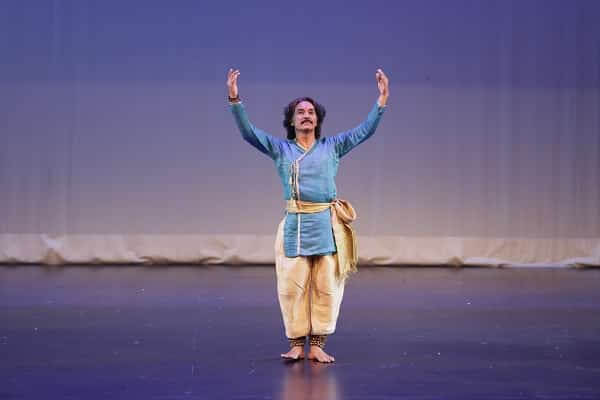When Kathak exponent Pandit Rajendra Gangani used his dance skills to produce a representation of the sea, it brought the house down.
At his recent Sydney concert – Kathak Mahotsav organised by Swastik Institute of Dance – he performed movements using Tarang (slow vibratory movement of hands) to produce the effects of the sea – waves and a sail boat included.
His mayur dance (dance of the peacock) was just as effective.
The playfulness of it all simply won the audience over, having been transported to a place where they were close to nature.
And yet, at a somewhat deeper level, it demonstrated beautifully that dance is really a way of knowing and communicating.
The Tharang formed the pure or abstract part of Pt Rajendra’s recital, the other two being the invocation dance, and expressive dance.
As invocation, Rajendraji chose the Durga Stuti. Dressed in blue and yellow, he recited a few padhants (syllables bound by a rhythmic time cycle), and then delved straight into the composition Ya Devi Sarva Bhooteshu. He stood menacingly as Durga the slayer; calming as Saraswati the goddess of learning; resplendent as Lakshmi the goddess of wealth, and ferocious as Chandi the demon goddess. The effortlessness of it all, showed the genius of the performer.
For the expressive component of his recital, Pt Rajendra chose a Thumri, a composition of his grandfather, Guru Govind Singh, a devotee of Radha and Krishna. It was a beautiful ode to love, bhakti and joy – all to the pleasing sound of Raga Desh.
Before conclusion, the jugalbandi with tabla was wonderfully entertaining. An amazing display by Fateh Singh Gangani, his tabla reverberated in the auditorium with all manner of sounds. At times as low as next to silence, and sometimes as high as Shiva’s Damaru, it was delightful drama indeed. (Percussion accompaniment is part and parcel of a Kathak recital.)
View this post on Instagram
Through it all, Pt Rajendra Gangani shone as a true beacon of the Jaipur Gharana, his particular lineage of the Kathak artform. He is the seventh generation of the family carrying on the legacy.
The Jaipur Gharana is a style known for strong and fast footwork, stories from Hindy mythology, and multiple spins or pirouettes known as chakkars, which the dancer executes using one ankle only.
The chakkars became a highpoint in the presentation by Pt Rajendra’s son, Sanjeet Gangani. His first performance outside India, remarkably, it was all extempore and not pre-planned. With a smiling face, the dashing Sanjeet brought out the intricacies of Kathak – foot movements, ankle twists and many picturesque poses. What pleased the audience were the chakkars: he performed a variety of them including the versatile Rajasthani one.
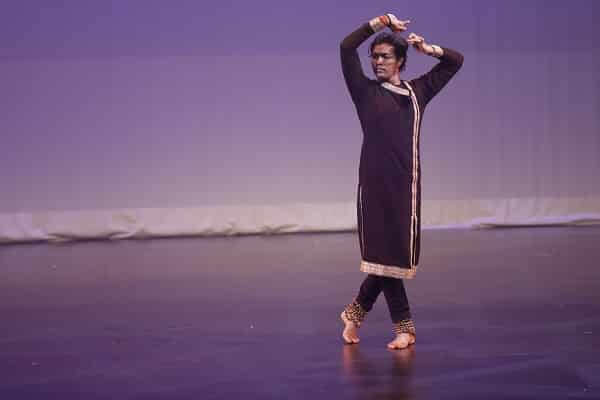
That all these technical aspects should create a sublime experience for the viewer, Sanjeet brought out effectively in his abhinaya of the Shabari episode from the Ramayana. The much-loved story here echoes the line ‘Rama comes wherever and whenever you call him’, Shabari being the symbol of the expectation of a devotee waiting for God. In what may be called pure abhinaya, Sanjeet brought out this feeling of desire, waiting, expectation, fulfilment, and contentment, all in action. Sanjeet’s portrayal of Shabari plucking fruits from trees, and feeding them to Rama, stood out vividly.
The father-son duo’s recital was more of a demonstration than a performance. Each of them talked about what they were about to perform and gave out padhants, itself an art in its own right.
Earlier in the evening, staff and students of the Swastik Institute showcased their talent. They were coming off a five-day workshop specially organised by director Sumati Nagpal and presented by the maestro Pt Rajendra Gangani and his son Sanjeet. A remarkable fete indeed, noting the outcome.
View this post on Instagram
First up, the littlest kids performed Vakrathunda Mahakaya. Scores of them all in white, danced in glee. Their immediate seniors presented an abstract dance with rich arm and leg movements to the surs sa ni sa, ni da ma. ga ma ga sa, ga ma da ni. It was a magnificent sight to see them turn to one side and stretch their arms in perfect unison.
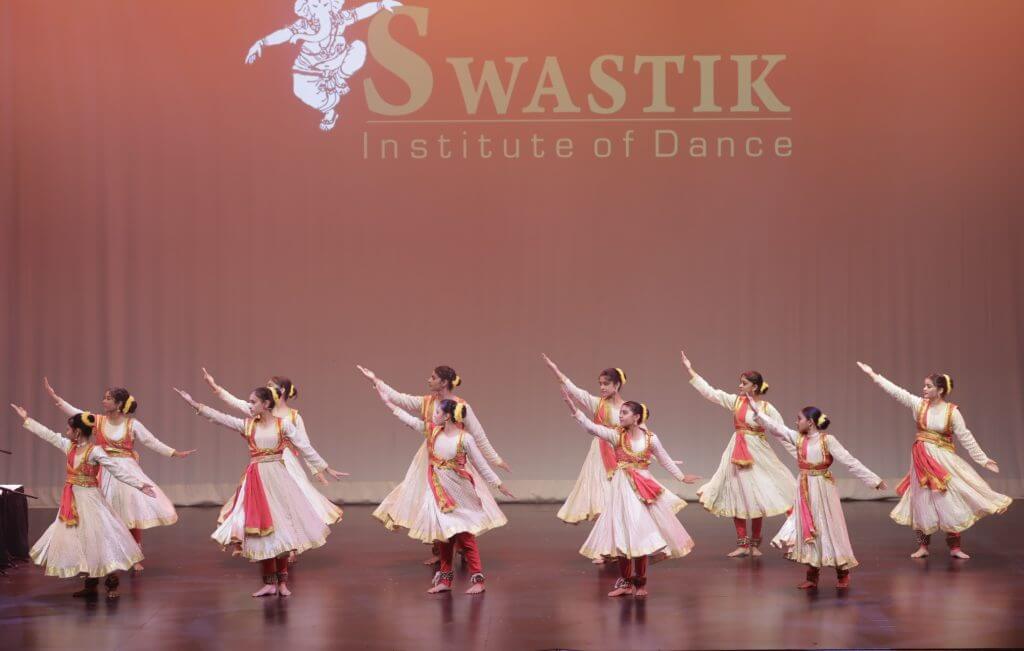
Then came the seniors, about 30 in number, performing a Tharana in Rag Malkouns. Their glittering outfits, and their slow hand and eye movements, were captivating. The grand finale was particularly remarkable.
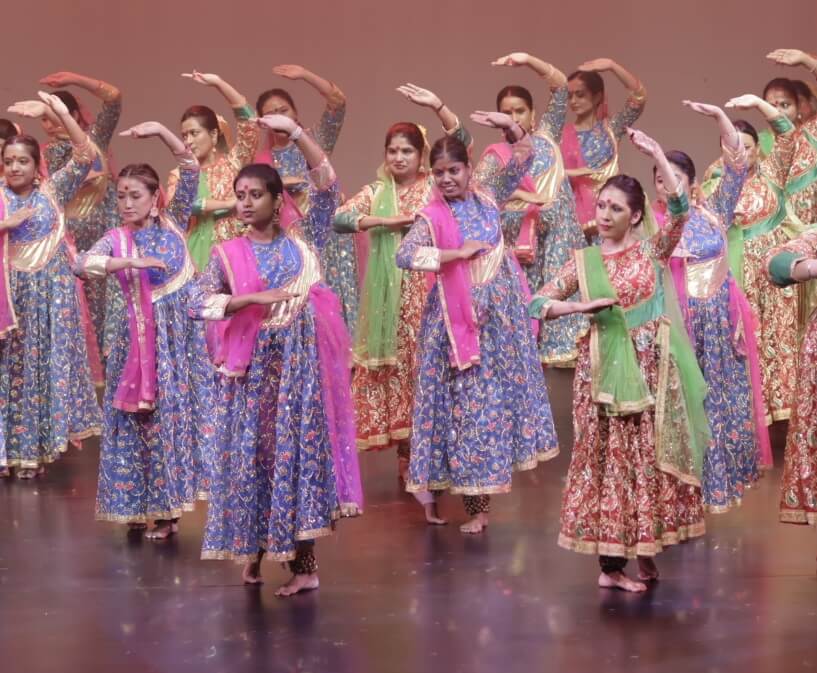
Another senior group, in red and blue costumes, rendered Namo Namo Namaskar in Rag Bhoopali. There was a good interaction with the padhant recital by Sanjeet Gangani. The item included a prayer performed in slow and fast tempos – Jaya Ram binathi suno moree evoked a good sense of Bhakti. (A shoutout here to the two young male dancers in group.)
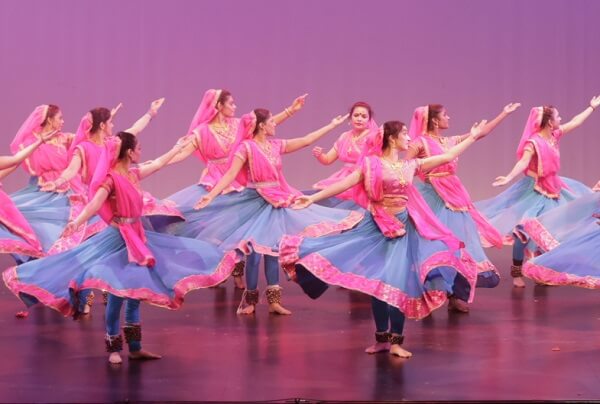
Vocal and harmonium were provided by Vinod Gangani. Sydneysider Dr Rashpal Singh provided sonorous sitar accompaniment, which stood out during his rendering of Desh, Malkons and Bhoopali ragas.
The audience, myself included, would have liked to see father and son in a duet. That was sadly missing. Perhaps the organisers could have exchanged their lengthy speeches and presentations at the end for a ten or fifteen minute performance by the two.
Yet in their own way, both demonstrated that Kathak is not just dance – it is an experience that stirs your soul.
READ ALSO: Priyanka Jain: Reviving picture tradtions recitations




